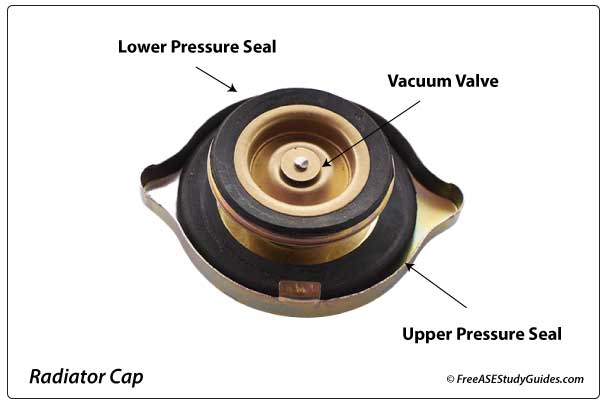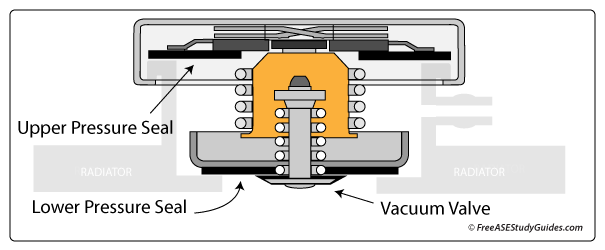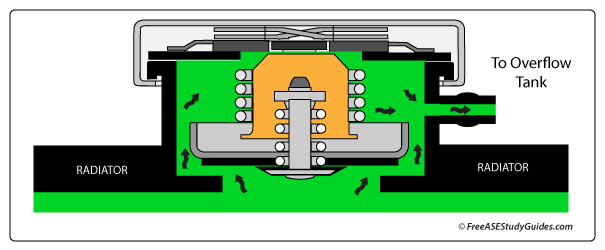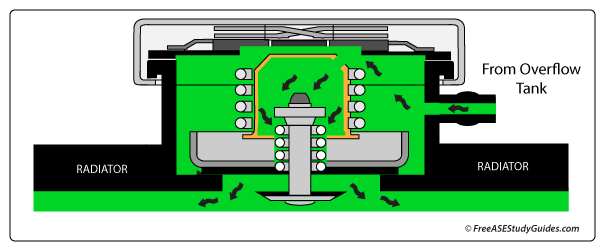Radiator Caps

As the engine's coolant heats, it expands, increasing pressure inside the closed coolant system. The radiator cap controls this expansion and provides constant pressure on the system.

The caps pressure rating varies by engine application, anywhere from 13 – 16 psi. High-performance caps range from 19 – 32 psi. Water boils at 212° F; increasing the pressure in a closed system increases the boiling point. Increasing the boiling point allows manufacturers to manufacture engines with higher operating temperatures.

The radiator cap also allows the engine's coolant to expand and contract without allowing air to enter the cooling system. The upper seal seals and protects the system at all times. After the engine warms and system pressure reaches the caps rated pressure, the pressure spring compresses, and pressurized coolant flows into the reservoir or coolant overflow tank. It allows for the expansion of the heated fluid.

The radiator cap also allows the coolant to flow back into the radiator as the engine cools. It also contains a vacuum valve. As temperatures drop and the coolant contracts, a vacuum is created in the engine's cooling system. The vacuum valve opens, allowing coolant to flow back into the radiator from the overflow tank. This valve allows for contraction as the fluid cools.